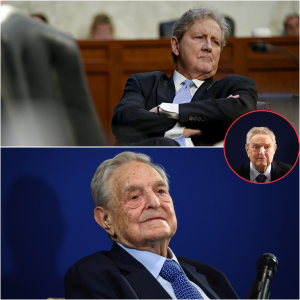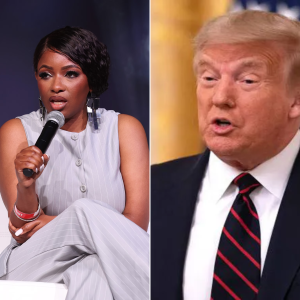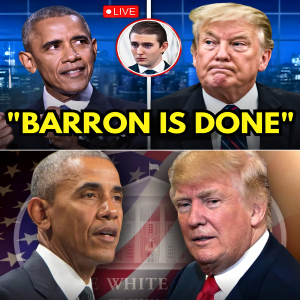In the glittering, cutthroat arena of late-night television, where monologues can make or break empires and ratings are the ultimate scorecard, Jimmy Kimmel’s triumphant return last month felt like a seismic event. Suspended by ABC for a fiery rant on the assassination of conservative firebrand Charlie Kirk—remarks that ignited a firestorm of Trump administration pressure and affiliate blackouts—Kimmel stormed back on September 24 with a monologue that didn’t just defend free speech; it detonated viewership records across the board. Preliminary Nielsen figures clocked in at 6.26 million broadcast viewers, shattering the show’s 22-year history and quadrupling its seasonal average of 1.6 million. By midweek, that episode had amassed over 17.7 million YouTube views, the most-watched monologue in “Jimmy Kimmel Live!” history, with social media reach exceeding 26 million. Headlines screamed of a “comeback for the ages,” industry whispers hinted at a liberal late-night renaissance, and even President Trump took the bait, firing off a Truth Social barb: “I can’t believe ABC Fake News gave Jimmy Kimmel his job back.”

Kimmel’s raw, emotional defense of satire—”A government threat to silence a comedian the president doesn’t like is anti-American”—resonated like a thunderclap, pulling in curious conservatives, outraged liberals, and fence-sitters alike. The episode’s buzz spilled into the next week, boosting “Jimmy Kimmel Live!” to a weekly average of 4.89 million viewers, more than double its prior haul, and surging Nightline to 1.19 million in the follow slot. For a fleeting moment, it seemed the winds of late-night were shifting back toward Hollywood’s coastal elite, away from the cable insurgents who’ve been chipping away at the old guard.
But here’s the blinding truth buried under the roar: Greg Gutfeld’s reign hasn’t budged an inch. The Fox News provocateur, whose 10 p.m. ET slot blurs the line between prime time and late-night satire, continues to lord over the landscape with numbers that make network titans look like also-rans. Through July 20, 2025, “Gutfeld!” averaged 3.1 million total viewers—nearly double CBS’s outgoing “The Late Show with Stephen Colbert” at 1.9 million, and more than twice ABC’s “Jimmy Kimmel Live!” at 1.5 million. In the key 18-49 demo, Gutfeld’s edge sharpens: 248,000 viewers versus Colbert’s 188,000, Kimmel’s 175,000, Jimmy Fallon’s 160,000 on NBC’s “The Tonight Show,” and Seth Meyers’ paltry 113,000. This isn’t a blip; it’s a bulldozer. For 21 straight months, Gutfeld has outdrawn Colbert, the erstwhile king of late-night totals, in a dominance that predates Kimmel’s suspension drama and persists unscathed in its wake.

Kimmel’s splash was undeniable—a ratings supernova fueled by controversy and catharsis. Yet, as Q3 2025 Nielsen data trickles in, the afterglow fades fast. “Jimmy Kimmel Live!” climbed to 1.85 million total viewers and 243,000 in the demo for the quarter, a modest bump from Q2’s 1.77 million and 220,000, but still trailing Colbert’s 2.42 million totals (now buoyed to 260,000 demo post-cancellation announcement) and light-years behind Gutfeld’s cable juggernaut. Fallon’s “Tonight Show” limped to third at 1.23 million viewers and 170,000 demo, while Meyers’ “Late Night” hovers around 751,000 totals, a shadow of its former self. Gutfeld? Steady as a metronome at 3 million-plus nightly, with year-over-year gains of 31.5% in totals and 24% in demo from Q2 2024, even as Q1-Q2 dips from seasonal lulls. In February 2025 alone, his show posted the only positive month-over-month growth among tracked programs, up in both metrics while broadcast rivals bled 7-24%.
What explains this unyielding fortress? Gutfeld’s secret sauce is unapologetic irreverence, a cocktail of conservative punchlines, pop culture skewers, and anti-woke jabs that flips the script on late-night’s predictable piety. Where Colbert, Kimmel, and Fallon serve up earnest Trump takedowns—often indistinguishable from MSNBC reruns—Gutfeld treats politics like a roast, not a sermon. “We’re the ones now who are having fun,” he quipped in a September Los Angeles Times profile, mocking the “frustration porn” of his peers: “Why end your night feeling worse about the world?” His ensemble—Kat Timpf’s deadpan libertarianism, Tyrus’ booming physical comedy, Kennedy’s unfiltered edge—feels like a rowdy bar hangout, not a lecture hall. And in a post-election America leaning red, that resonates. January 2025 Nielsen crowned him with 3.497 million totals and 308,000 in the 25-54 demo, over a million ahead of Colbert’s 2.376 million.

The irony? Gutfeld’s ascent owes a nod to the very ecosystem he now eclipses. He honed his chops as a panelist on Fox’s “The Five,” but his late-night pivot in 2021 filled a void: a right-leaning antidote to the left’s monopoly. As traditional late-night hemorrhages viewers—down 7-8% quarter-over-quarter for the big three—Gutfeld’s “channel flip” from news junkies to comedy seekers has calcified into loyalty. Even crossovers burnish his brand: His August appearance on Fallon’s show spiked “The Tonight Show” to 1.7 million viewers, its 2025 high and a 57% YTD boost, with the YouTube clip hitting nearly 1 million views. Fallon, grinning through an awkward hug recounting their boozy first meeting, looked like he was interviewing the competition’s MVP.
Yet, the real story isn’t today’s scoreboard—it’s the shockwave brewing. CBS’s axing of Colbert’s “Late Show” next year, amid sagging ad dollars and streaming defections, signals the genre’s death spiral. Kimmel’s ABC deal expires in 2026, and whispers of fatigue swirl; his suspension saga, while ratings gold, exposed the fragility of network tolerance for edge. Fallon’s NBC tenure feels adrift, with YOY losses steepest at 14-24%. Enter Gutfeld, the 61-year-old new dad who’s anything but slowing down. Insiders buzz about Fox’s “secret plans”: a potential 11:35 p.m. expansion, syndication push, or even poaching disgruntled talent like Meyers for a “Gutfeld! After Dark.” His Fox Nation game show “What Did I Miss?”—quizzing isolationists on fake news—hints at multimedia empire-building, blending laughs with cultural critique.
This isn’t just dominance; it’s disruption. Late-night’s old guard chased relevance through rage, but Gutfeld sells escape with edge—a tonic for an exhausted America. As Q4 looms, with holidays and elections juicing cable, expect his lead to balloon. Kimmel’s return was a fireworks show; Gutfeld’s run is the steady sun. The spotlight may dazzle on Hollywood’s comeback kid, but the throne? It’s bolted down in midtown Manhattan, occupied by a fox in a suit who knows the real joke: In 2025, late-night’s future isn’t blue—it’s unapologetically red, white, and punchy.
For fans, it’s vindication. As one Reddit thread charting 2015-2025 ratings quipped: “Gutfeld’s the only one not sharing scraps with the libs.” Colbert’s cancellation sparked memes of “progressive comedy’s funeral”; Kimmel’s tears post-Trump win now read like prophecy. Gutfeld, ever the closer, summed it in his book: He didn’t destroy late-night—he just made it fun again.
The shockwave? Brace for Gutfeld unchallenged, remaking the format in his irreverent image. Late-night isn’t dying—it’s evolving, and the fox is leading the pack.





